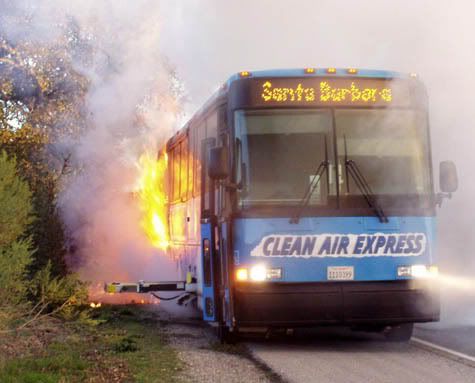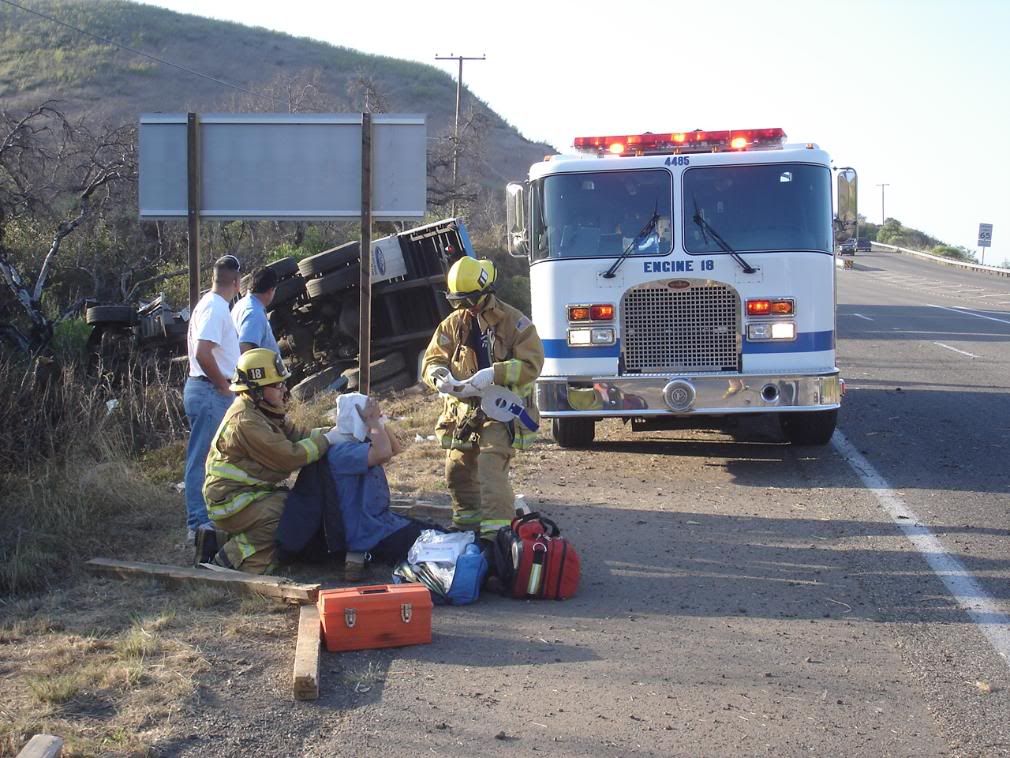Interstate/Highway Safety
Speed limit 65 MPH, real speed of 70 MPH plus. What do you and your Department do for safety when responding and while on the side of the road?
Tags:
Replies to This Discussion
-
Permalink Reply by Trainer on January 1, 2009 at 2:59pm
-
You can get the DOT spec stripping on gear now, still got to wear the vest. I know we need chevron stripping on gear!
-
Permalink Reply by Trainer on January 1, 2009 at 3:02pm
-
People get out of your way???? They are usually in a rush to get around us.
-
Permalink Reply by lutan1 on January 1, 2009 at 3:24pm
-
When operating on any road, when considering the placement of traffic cones, etc, we use the 1:1 ratio.
For every 1 kilometre of speed, we run cones every 1 metre.
ie: 100 km/h would require cones placed for 100 metres
-
Permalink Reply by Jay Nicholson on January 1, 2009 at 3:38pm
-
Blocking isn't just for interstates anymore. Cones, flares etc are just to flimsy to stop a vehicle going even 25MPH(sorry I can't convert to km/h). A well place apparatus is going to be the safest barrier for fire/ems personnel.
-
Permalink Reply by Jason Brooks on January 1, 2009 at 9:26pm
-
The striping is only part of the standard. The color of our gear still does not meet the standard though.
-
Permalink Reply by Jason Brooks on January 1, 2009 at 9:28pm
-
Don't forget to block the road with apparatus. At least block the lanes that you are working in, plus one. And if you shut the road down completely, vests are not required.
-
Permalink Reply by Mike Schlags (Captain Busy) Retd on January 1, 2009 at 9:44pm
-
The fire station that I work at has miles of highway that we are responsible for as the first in engine. Typically, we have a waiting time for the second in engine, so we have to set things up before the California Highway Patrol gets on scene as well. Firefighter safety is paramount here. Key point for response is that people tend to look at the incident and not the road... and this means both directions. And who can blame them? When you see something like this, how could you not look?

-
Permalink Reply by Jay Nicholson on January 1, 2009 at 9:47pm
-
I can't help but laugh at the irony of the bus's name
-
Permalink Reply by Mike Schlags (Captain Busy) Retd on January 1, 2009 at 10:06pm
-
I never thought about it that way but you are so right!
-
Permalink Reply by Peter Lupkowski on January 1, 2009 at 10:12pm
-
We have response from stations at both ends of interstate area. You'd be surprised how many "in the South bound lane" are actually in the North, and vice versa. We also use blocking, vests and designated safety officers.
-
Permalink Reply by Mike Schlags (Captain Busy) Retd on January 1, 2009 at 10:26pm
-
Often times, there is simply no extra room when pulling off the roadway to enable close access to the MVA and to minimize transport distance for emergency equipment...

This is why you need to really think about where you are placing equipment on your rig. EMS and Extrication equipment for this reason need to be on the passenger side and rear compartments if necessary to afford maximum safety for firefighters. Is this a normal way for all of us to do business? It is for the rigs' I've seen. Roadway restrictions and traffic flow make responses incredibly difficult sometimes... even though you have pulled off the roadway as far as possible.
- ‹ Previous
- 1
- 2
- 3
- Next ›
Specialty Websites
Find Members Fast
Firefighting Videos
© 2025 Created by Firefighter Nation WebChief.
Powered by
![]()
Badges | Contact Firefighter Nation | Privacy Policy | Terms of Service